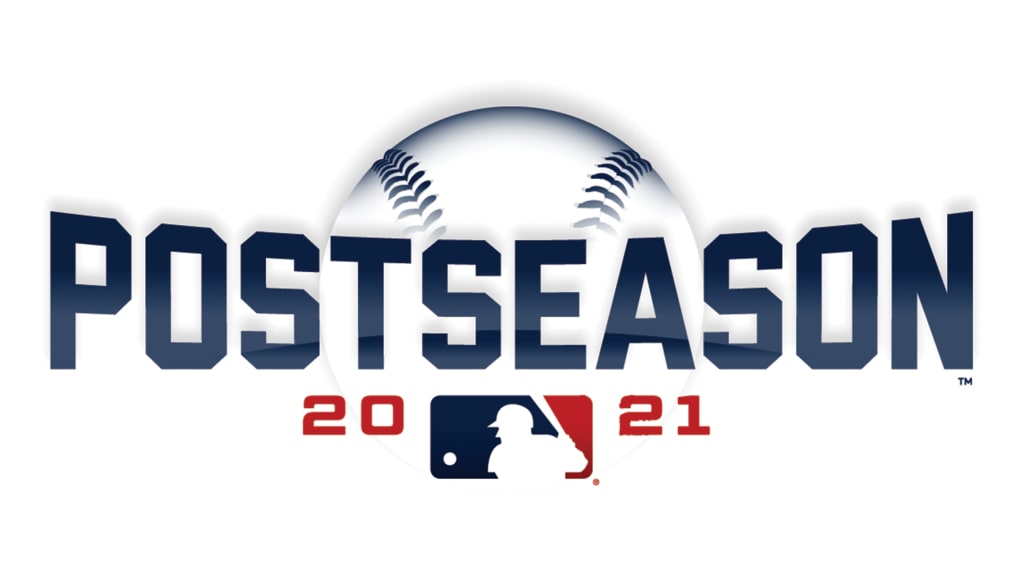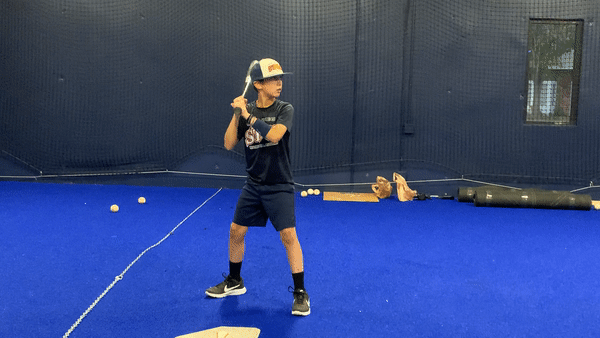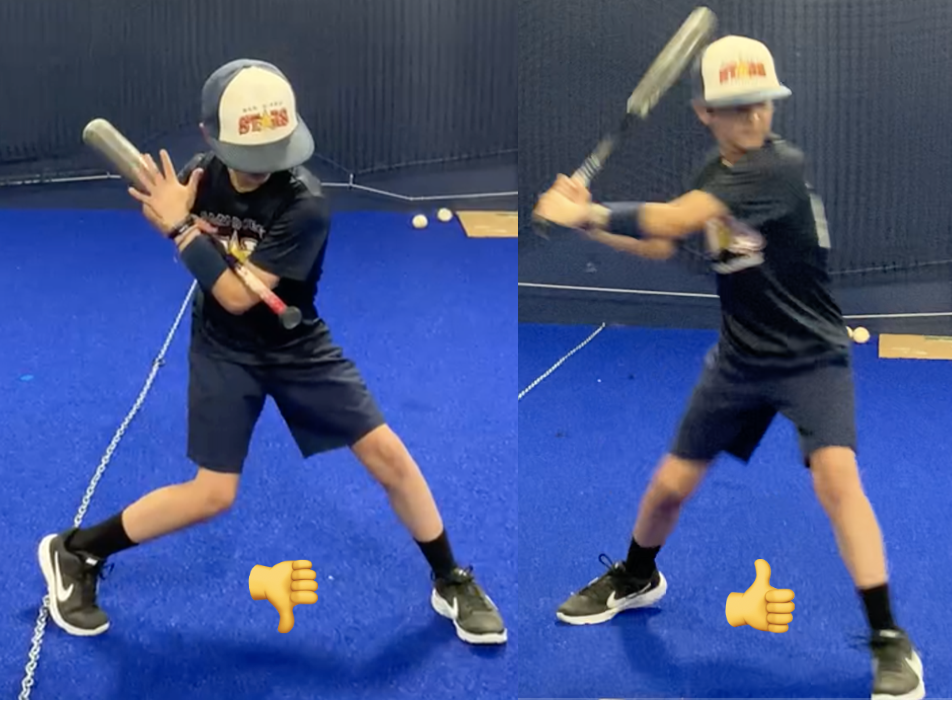As the ALCS and NLCS conclude and set the stage for the 2021 Fall Classic, below are some memorable moments from this postseason and what they can teach us about how to win games in October.
Two Strike Hitting
In game three of the NLCS, Los Angeles trailed Atlanta 5-2 heading into the bottom of the eighth inning. They were just six outs away from going down 3-0 in the series. Will Smith lead off the frame singling on a 1-0 low and away slider from Atlanta relief pitcher Luke Jackson. Justin Turner followed, popping up to second base for the first out of the inning. A.J. Pollock was next up to the dish with one out and Smith on first base. Jackson worked Pollock into a 0-2 count. After missing down and away with a slider, Jackson went back to the same pitch. Pollack went down and got this one, sending it back up the middle past the diving glove of Dansby Swanson. This set up runners on first and second with just one out for Cody Bellinger, the hero of NLDS game five.
In Bellinger’s last at-bat, LHP A.J. Minter sent the Dodgers slugger back to the dugout on just four pitches. The kill shot was a 97 mph fastball he blew by him at the top part of the strike zone. It looked like this:
This at-bat, Jackson started Bellinger with a pair of sliders. The first missed low and out. The second induced a Bellinger whiff, finishing middle down. Jackson reared back and blew his next fastball right by Bellinger. It registered at 96 mph. Up 1-2 in the count, Jackson had a couple of different options. He decided to try and replicate Minter’s kill shot from the bottom of the sixth: Fastball up and out of the zone.
This time, however, Bellinger was looking for it.
Bellinger’s two strike, three run shot evened the score at five. Three batters later, Mookie Betts doubled in Chris Taylor and gave the Dodgers the lead for good. They would go on to win the game 6-5.
According to 2017 MLB data, below is the slash line for big league hitters in two strike counts:
- .176/.281/.250
On the surface, this shouldn’t be a surprise. Hitters don’t have the affordance to take tough pitches when they only have one strike work with. As a result, they’re more susceptible to swinging at pitches they can’t do a ton of damage with – leading to decreased offensive production.
It’s exactly why hitting in these types of counts are the difference maker when it comes to winning in October.
Bellinger’s blast wasn’t the only example of two strike hitting in game three. In the first inning, Corey Seager took a 1-2 Charlie Morton curveball 444 ft. to center to give the Dodgers a 2-0 lead. For reference, Morton’s curveball this year generated whiffs at a 40.1% clip, hitters batted .127 against it, and generated a slugging of just .187. It’s not often hitters park that pitch in the bleachers, let alone do it in two strike counts. Seager did both.
On the other side of the field, Atlanta outfielder Joc Pederson singled in a run facing a 2-2 count just pitches after a controversial Walker Buehler cutter was called a ball. In the top of the fifth, Adam Duvall singled in a run on an 0-2 slider down and away. The run grew Atlanta’s lead to 5-2 and increased their chances of winning from 76.2% to 84.9%.
Hitting in two strike counts is hard. The best teams, however, are resilient in these counts. Game three of the NLCS is the perfect example of how a few timely two strike hits can completely change the complexity of an outcome.
Pitch to contact? Probably not
Earlier this week, ESPN analyst Alex Rodriguez tweeted the following:
Paging all analytics departments….Pitching to contact is not a negative. It provides quick outs, low pitch counts, keeps the defense engaged and can limit the necessary outs needed from your bullpen. #MLB #ALCS
— Alex Rodriguez (@AROD) October 20, 2021
While this seems great in theory, application is a little more complicated. There are a couple of moments this postseason that illustrate this (not limited to these, by any means).
In game five of the ALCS, Houston had just secured a 4-0 lead via a Yule Gurriel double. With runners on second and third, two outs, and a 1-2 count, Boston relief pitcher Ryan Brasier threw a high and in fastball to Houston infielder Jose Siri. Siri had failed to record a hit to this point in the postseason. On this pitch, Siri got jammed. The ball came off his bat at 67.5 mph. It floated over the Boston infield and landed in a dead zone just shallow of Boston center fielder Kiké Hernandez. Two runs scored, increasing Houston’s lead to 6-0 and chances of winning to 97.9%.
In game two of the NLCS, Dodgers hitter Chris Taylor came to the plate in the top of the seventh with bases loaded, two outs, facing an 0-1 count. Luke Jackson threw a fastball up and in at 97 mph, jamming Taylor as he sent a flair to center. Atlanta’s new center fielder, Guillermo Heredia, charged in trying to make a play on the ball. It bounced before landing in his mitt and trickled past him, where Joc Pederson cut it off to prevent further damage. The ball came off Taylor’s bat at 76.6 mph. It plated two, gave Los Angeles a 4-2 lead, and increased their chances of winning from 53.4% to 83.5%.
Both Siri and Taylor got jammed on their respective two RBI base hits. Siri’s came off the bat at just 67.5 mph. Taylor’s came off at 76.6 mph. While we don’t expect a ton from batted balls that don’t even sniff 80 mph, below are expected batting averages for both:
- 67.5 mph, 42 LA: xBA .930
- 76.6 mph, LA 25: xBA .660
Yes, that’s correct. Two batted balls averaging 72 mph combined to produce an xBA of .795. This is the problem with “pitching to contact.”
While you could argue selection bias in this instance, we have to respect the role luck plays in baseball games. In Boston’s game five loss, their lineup combined to hit five baseballs 107.7 mph or harder. They scored one run. Kiké Hernandez, arguably Boston’s hottest hitter right now, has collected 19 hits postseason. Six haven’t even cracked 90 mph. Four came off the bat less than 80 mph. Chris Taylor, LA’s hottest hitter this postseason, has collected 12 hits this postseason. Six have come off the bat at 82.1 mph or less. Five haven’t even cracked 79 mph.
If you’re going to die on the hill of “pitching to contact,” just remember that you’re susceptible to these types of outcomes. It’s why, in my opinion, the greatest asset you can have on the mound is missing bats. It’s the one outcome in which pitchers have 100% control over. The second the ball leaves the bat, we allow luck to play its hand. Sometimes it works out in our favor. Other times, as seen above, it does not. Discouraging the one thing pitchers have complete control over, in my opinion, makes zero sense.
Out of the top 10 pitchers this season according to Fangraphs WAR, not one posted a K/9 south of 9.19. Seven struck out more than 10/9. Out of the top five in WAR – Corbin Burnes, Zack Wheeler, Nathan Eovaldi, Walker Buehler, Max Scherzer – every single one threw minimum two pitches that generated a whiff rate minimum 30%. Burnes, Wheeler, and Eovaldi all threw at least one that got 40% whiffs. Oddly enough, they finished 1-2-3 in pitching WAR.
Pitching to contact is great until contact results in unfavorable outcomes. The best way to eliminate this is to eliminate contact. In the biggest games of the year, stuff matters. You have to be able to miss bats in key situations if you want to win a pennant. If you don’t, you run the risk of losing to baseball’s toughest intangible influencer: Luck.
The “Firemen”
In game two of the NLCS, Max Scherzer was pulled in the bottom of the fifth inning with one out and one on. LHP Alex Vesia entered with the game deadlocked at 2. After an Eddie Rosaria single, Vesia was faced with first and second, one out, and 2020 NL MVP Freddie Freeman at the plate. With the count 2-1, Vesia went right after Freeman with a 94 mph fastball. Freeman swung and missed. He went back to the same pitch 2-2, Freeman fouling this one off. Vesia followed going slider up and away at 85 mph. Freeman swung right through the pitch for the second out of the inning.
Next up was Ozzie Albies, who finished the regular season with 30 HR and 106 RBI. After missing down and away with a heater, Vesia went fastball slider to get the count back in his favor at 1-2. Albies took a questionable fastball, and then fouled off 95 down and away. Vesia doubled down and went right back to his fastball, which he throws at a 72.4% clip. This one was middle up, the same pitch Freeman swung through 2-1. Albies took a big cut and whiffed, ending the inning with the score still tied 2-2.
The expected run total for an inning with one out, runners on first and second, is 0.93019. There’s a 17.09% chance one run scores and a 11.32% chance two runs score. Not to mention, the two guys standing in Vesia’s way combined for a .848 regular season OPS and 8.2 WAR.
In game one of the ALCS, Houston starter Framber Valdez did not last long against a hot Red Sox lineup. He surrendered the baseball in just the third inning with two outs and runners on second and third. Boston had just plated three thanks to a Kiké Hernandez homer, José Altuve error, and Hunter Renfroe double. In to relieve Valdez came Yimi García. The expected run total for the situation was 0.603. Boston had a 14.75% of plating two more.
García faced Red Sox infielder Christian Arroyo. He quickly fell behind Arroyo 2-0, but evened it back up with a four seamer sinker combo. The last sinker he threw was his best one of the sequence. It started middle and faded and down, in, and out of the strike zone. Arroyo swung right over top of it for strike three. Houston was able to keep the deficit at 3-1 until the sixth inning, where Altuve made up for his error and launched a two run shot into the left field seats. They would go on to win the game 5-4 and take game one of the series. García’s critical strike out was a pivotal moment in this outcome.
While Vesia and García don’t often pitch in high leverage situations late in games, their role is just as important as the closer. They’re the “firemen.” They minimize damage, clean up the “fires” left behind, and find ways to get the ball into the hands of Kenley Jansen and Ryan Pressley. Just because the game isn’t in the ninth inning doesn’t mean the stakes aren’t high. In any of the situations above, a timely hit could have completely changed the outcome of the game. Instead, Vesia and García came in, shut the door, and kept their team in the game.
These kinds of arms are critical to win games in October, especially since starters aren’t going deep into games the way they typically do in the regular season. To give you a feel for this, Walker Buehler and Max Scherzer are both in contention to win the NL Cy Young award. Since going 6.1 IP against San Francisco, Buehler has lasted just 4.1 and 3.2 IP in his last two outings. Scherzer hasn’t made it beyond the fifth inning in two of his three postseason starts.
When your starters aren’t finishing games the way they’re accustomed to, the bullpen ends up being forced to pick up a ton of slack in high pressure situations. Guys like Vesia and García are the glue that hold games together. If you don’t have guys who can come in on cue and put out fires, they’re going to grow out of control before you have a chance to add to the scoreboard. You can’t throw away games in October. Every out matters. You need a staff that can work together as a unit to collect all 27.
If your weak link in the chain is in the bullpen, it will get exposed this time of year.








